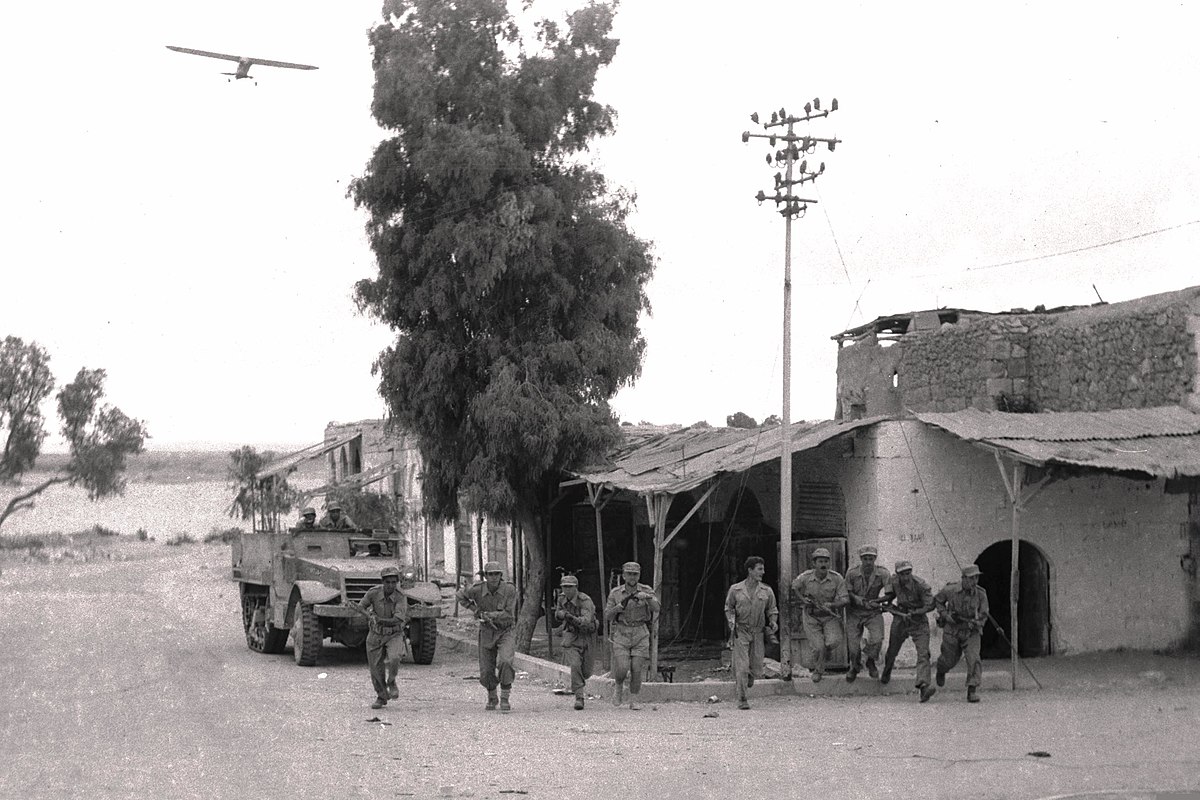
First Arab–Israeli War
LebanonThe 1948 Arab–Israeli War, also known as the First Arab–Israeli War, was a significant and transformative conflict in the Middle East, marking the second and final stage of the 1948 Palestine war. The war officially began with the termination of the British Mandate for Palestine at midnight on 14 May 1948, just hours after the Israeli Declaration of Independence. The next day, a coalition of Arab states, including Egypt, Transjordan, Syria, and expeditionary forces from Iraq, entered the territory of former British Palestine and engaged in military conflict with Israel.[182] The invading forces took control of the Arab areas and immediately attacked Israeli forces and several Jewish settlements.[183]
This war was the culmination of prolonged tensions and conflicts in the region, which had escalated following the UN Partition Plan's adoption on 29 November 1947. The plan aimed to divide the territory into separate Arab and Jewish states and an international regime for Jerusalem and Bethlehem. The period between the Balfour Declaration in 1917 and the end of the British Mandate in 1948 saw growing dissatisfaction from both Arabs and Jews, leading to the Arab revolt from 1936 to 1939 and the Jewish insurgency from 1944 to 1947.
The conflict, primarily fought on the territory of the former British Mandate, along with areas in the Sinai Peninsula and southern Lebanon, was characterized by several truce periods over its 10-month duration.[184] As a result of the war, Israel expanded its control beyond the UN proposal for the Jewish state, capturing nearly 60% of the territory designated for the Arab state.[185] This included key areas such as the Jaffa, Lydda, Ramle, Upper Galilee, parts of the Negev, and areas around the Tel Aviv–Jerusalem road. Israel also gained control of West Jerusalem, while Transjordan took over East Jerusalem and the West Bank, annexing it later, and Egypt controlled the Gaza Strip. The Jericho Conference in December 1948, attended by Palestinian delegates, called for the unification of Palestine and Transjordan.[186]
The war led to significant demographic changes, with approximately 700,000 Palestinian Arabs fleeing or being expelled from their homes in what became Israel, becoming refugees and marking the Nakba ("the catastrophe").[187] Concurrently, a similar number of Jews immigrated to Israel, including 260,000 from surrounding Arab states.[188] This war laid the foundation for the ongoing Israeli-Palestinian conflict and significantly altered the geopolitical landscape of the Middle East.
